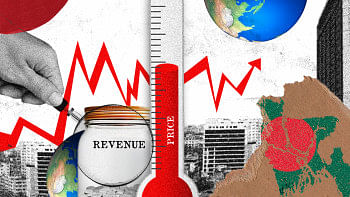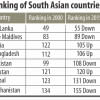Bangladesh’s amazing growth: A potential catalyst for increased investment

There cannot be any doubt that Bangladesh's development has exceeded all expectations of critics, foes, and even friends—especially more so in the last decade under the judicious leadership of the current government. The resilience of Bangladeshi hearts and minds have led us to the next step: the country is set to graduate from the United Nations' LDC list to the developing country status by 2026. This is a proof of acceptance of the country's leaps in development by the international community.
Investment in infrastructure
In 2009, during the global low-interest regime, the Bangladesh government undertook massive infrastructure projects that were implemented with not only local funds, but bilateral and multilateral loans, resulting in extraordinarily low cost of funds. Some of the examples of the country's infrastructural achievements in recent years include: the Padma Bridge, which stretches over six kilometres and is the longest bridge spanning the Ganges; the Dhaka metro rail; highways; Digital Bangladesh that provides access to internet for all; investment in the energy sector ensuring electricity for all; and deep sea ports, which all lay the foundation for future economic growth. These projects enable the whole of Bangladesh to be productive, including regions that were previously less connected. Expansion of the country's international and domestic airports have also created a degree of nationwide and international connectivity, which has visibly contributed to the enablement of every Bangladeshi and international investor.
Bangladesh's national grid now has a capacity of over 25,000MW, which provides enough electricity margin to accept new foreign direct investments (FDIs) or domestic manufacturing and industrial development. Towards further energy security, Bangladesh has two Floating Storage and Regasification Units (FSRUs) and is working to add another two to its fleet, providing much needed energy of regasified imported LNG to natural gas. These could provide 2,000 mmcfd of natural gas to industries, fertiliser production, electricity generation and households.
Bangladesh has also established domestic and international connectivity digitally. Now, access to information is available at one's fingertips, with a nationwide network of telecommunications and internet connectivity. The vision of Digital Bangladesh promulgated in 2008 brought about significant improvements in mitigating the "digital divide," impacting economic, educational and social inequality. Info-Sarker, an e-governance initiative, has made numerous government services available online and improved ease of doing business. The rapid development of necessary infrastructure for economic growth has provided a platform for the country to boost its potential even further.
Nestled between South and Southeast Asia, Bangladesh enjoys a strategic geographic advantage and acts as a bridge for trade and investment between these regions, as well as the Seven Sisters of India, i.e., the northeastern states. As a result, its position provides it with significant opportunities to engage in regional connectivity and trade, especially with India, China, and Asean countries.
Transition readiness
Currently, the ready-made garment (RMG) industry is dominant and accounts for over 80 percent of the country's exports. Through the expertise garnered from the growth of the RMG industry, Bangladesh is well-positioned to make the transition to a more diversified manufacturing base. This shift is evident in the rapid growth of leather, jute products, healthcare, pharmaceuticals, ceramics, and internet service industries.
The foundation for a "green transition" has also been laid with IT-enabled activities; investments in Bangladesh's technology sector have increased significantly, creating a large pool of entrepreneurial service providers.
Bangladesh has made major efforts to reach the UN's Sustainable Development Goals (SDGs), and last year, the country successfully achieved two goals—SDG 12-Responsible Consumption and Production, and SDG 13-Climate Action.
Reaping national, regional demographic dividends
Bangladesh can take advantage of the emerging market with its large and readily available labour force, with over 70 million workers participating in its economic growth. Furthermore, an average of almost three million new workers have been entering the labour force each year, since 2017. Around one-fourth of Bangladesh's population is aged 15 to 29 years, resulting in a young and vibrant workforce that has the potential to propel the economy even further.
Bangladesh's economic development has positively impacted key social indicators. Notably, the literacy rate has increased to 74.7 percent in 2022 from 51.6 percent in 2004, which enables the country to reap the benefits from its favourable demographics. Gender parity in education has improved, and child mortality rates have demonstrably decreased. These advancements have contributed to a more productive and skilled workforce.
An increasing flow of inward remittances from more than 10 million hard-working non-resident Bangladeshis, especially from the Middle East, have financed the country's trade deficits of around six to seven percent of the GDP. As a positive result, Bangladesh has never experienced a balance of payment (BOP) crisis—a testament to its remarkable economic resilience and growth over the past few decades across the country's ever-evolving economic landscape. Furthermore, a large number of women are employed by the RMG sector strengthening gender equality and pay parity within the country.
With this, a fast-growing middle class has emerged within the country. The expansion of Bangladesh's middle class is driving domestic consumption and contributing immensely to the growth of the retail, real estate and services sectors. As a result, this emerging middle class is attracting FDI in consumer goods, financial services, technology, e-commerce, healthcare and other sectors.
Regional markets, especially in Bhutan, Nepal, and India's northeastern states, have benefited tremendously with Bangladesh's diversification; a potential consumer base is emerging from the rise of a new middle class within these markets.
The journey ahead
Bangladesh's development journey serves as a model for other developing nations. The stability and progressive policies of the current government have undoubtedly played a crucial role in facilitating this remarkable economic growth and social progress. Bangladesh's debt-to-GDP ratio, given the remarkable infrastructure growth, remains at 39 percent, which is low in comparison to other developing countries.
The Bangladeshi public and businesses are reaping the benefits of this infrastructural development—physical and social. It is being utilised, bringing in unprecedented levels of revenue. This will enable Bangladesh's GDP to grow at a rate of six to eight percent, from a base of $460 billion.
Muhammed Aziz Khan is chairman of Summit Group.
Views expressed in this article are the author's own.
Follow The Daily Star Opinion on Facebook for the latest opinions, commentaries and analyses by experts and professionals. To contribute your article or letter to The Daily Star Opinion, see our guidelines for submission.


 For all latest news, follow The Daily Star's Google News channel.
For all latest news, follow The Daily Star's Google News channel. 









Comments